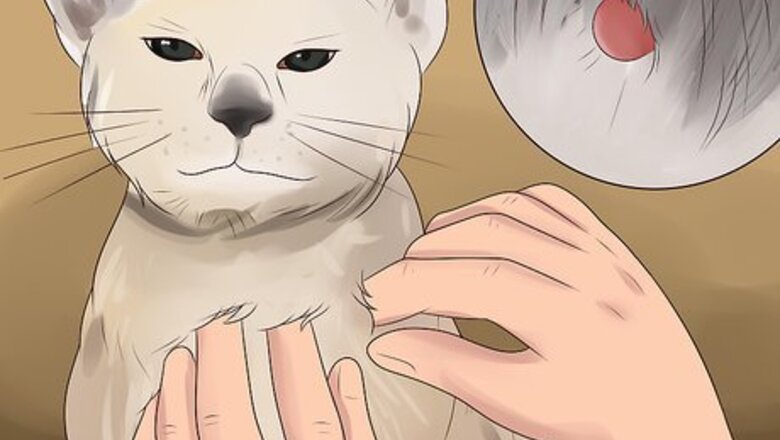
views
Identifying Flea Bites
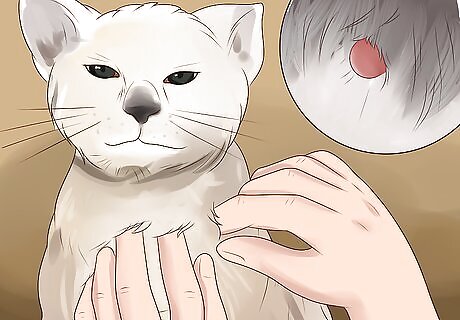
Look for raised red lumps on the cat's skin. Flea bites are likely to raise small red lumps on the cat's skin, but these can be difficult to see because of the cat's fur. However, if a cat has a flea bite allergy these lumps tend to scab over. Typically, a cat has many pinhead sized scabs scattered over the skins surface. Use your fingertips to stroke the cat, and look for spots with a gritty feel. If you push the fur against the lie of the coat to see the skin, the tiny scabs will become evident.
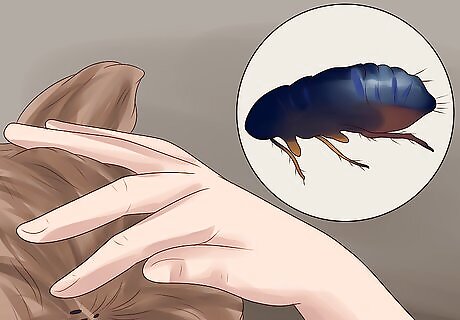
Watch out for fleas in the cat's coat. If the cat has a heavy flea infestation you may see fleas. However, fleas do not live on the pet but only hop on to feed. This means that it can be difficult to find the culprit, unless it is a heavy infestation. You are however, quite likely to spot evidence of their presence in the form of flea dirt.

Identify any flea dirt. Flea dirt is actually flea excrement, and is composed of dried blood that gets trapped between the hairs. To the naked eye it looks like black grit. If in doubt, place a piece of the suspected flea dirt onto a piece of damp cotton wool. The moisture in the cotton wool reconstitutes the blood and an orange halo will spread around the sample.
Soothing the Irritated Skin
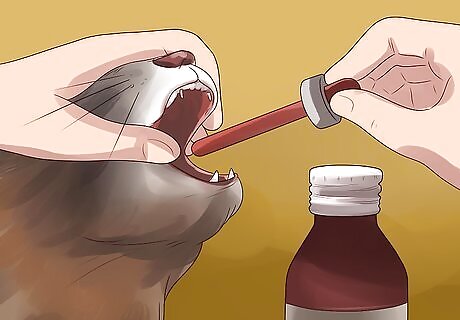
Understand that the first step is to soothe any itchiness. Irritation is caused when the flea bites and injects saliva into the cat's skin. Flea saliva is a potent allergen which sets up an allergic reaction in sensitive animals. It is pointless to bathe or shampoo the cat because the irritation is happening within the skin rather than on the surface. Also topical creams tend not to be effective because the allergic reaction is usually widespread over the body and it is not practical to cover the entire cat in ointment. If the cat is very itchy then she will scratch and traumatize the skin.

Take your cat to the veterinarian. Your veterinarian may provide short term relief in the form of anti-inflammatory medication. Be sure to tell your vet if your cat is taking any other drugs or medications, even herbal ones.
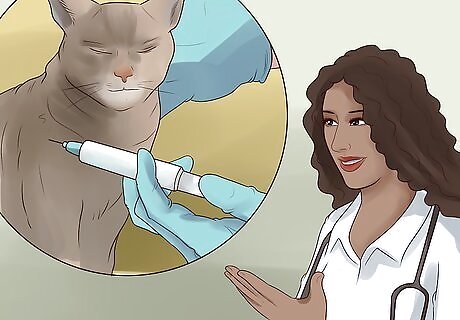
Understand how corticosteroids work. Steroids are sometimes used if the cat is distressed by the level of itchiness. Controlling the itch can help reduce the risk of self-trauma to the skin, in that it reduces the chance of the cat scratching and her claws lacerating the skin. Corticosteroids work in several ways to decrease inflammation and irritation. Firstly, they decrease the sensitivity of cells to chemicals that mediate inflammation, thus making those cells less reactive. They also inhibit the production of those same chemicals which cause the inflammation in the first place. Importantly, steroids discourage the mast cells that contain histamine from flooding the area, and for those mast cells that are present, steroids inhibit them from releasing their histamine load (histamine is a potent source of itchiness).
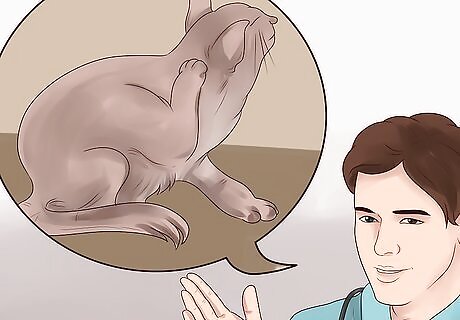
Recognize the benefits of using corticosteroids. The benefit of using steroids for a cat with flea bites is two-fold. Steroids decrease skin inflammation and irritation, thereby reducing the risk of the cat damaging herself scratching. The other benefit is that they help to switch off the allergic reaction associated with flea bite saliva sensitivity. They do this by down-regulating the immune system such that the production of antibodies associated with the presence of foreign antigen (in this case flea saliva) is reduced.

Decide whether to give the steroids in the form of a depot injection, oral tablets, or a spray. The depot injection is the most commonly used. It is given by intramuscular injection and works for 5 to 7 days at a time. A single injection is often enough to give the owner time to institute flea control and thus remove the source of irritation. The preferred injection is dexamethasone, in a dose of 0.25ml for an average 5kg cat, possibly repeated 7 days later if the cat is still itchy. However, a longer acting (3-4 week) injection is available. Your vet may choose this option in severe cases. Oral steroids are another option, although less popular than the injection because of a cat's natural disinclination to take pills. The dose is 1mg/kg, so a 5kg cat requires a single 5 mg tablet once a day, with or after food, for 5 to 7 days. The third option is Cortavance spray, which is applied to the cat's skin from a pump bottle. This is absorbed into the skin where it has an anti-inflammatory action identical to that of systemic steroid treatments. The advantage with this treatment option is that the steroid molecule is destroyed in the skin so no, or very little, active steroids make it into the cat's circulation. However, the disadvantage is that the cat's fur may stop the spray from contacting the skin's surface, making it ineffective.
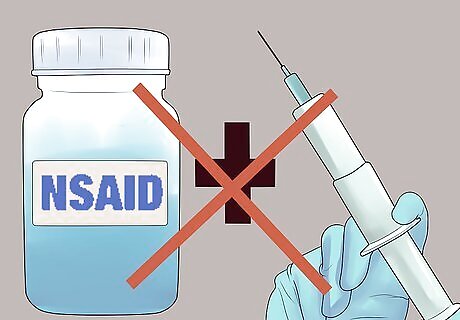
Never give steroids alongside NSAIDs. Although there are no contraindications for using steroids alongside antibiotics or anti-histamines, steroids must never be used at the same time as NSAID pain relief, such as meloxicam. The combination of steroids and NSAIDs is likely to lead to severe gastric ulceration, hemorrhage, and possibly death.
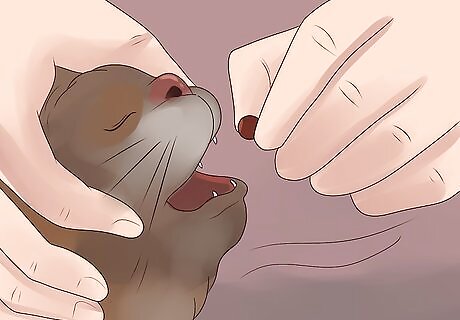
Use antibiotics if the flea bites become infected. If the skin is infected, it may feel sticky or there may be some oozing from the spots. Also, the cat may lick their skin as a result of itchiness, resulting in inflamed, sticky sores. The stickiness is a sign of infection and antibiotics are needed. This is especially true if the cat is given steroids, because this suppresses the cat's immune system and makes it more difficult for the cat to fight off the infection. The most commonly prescribed are broad spectrum antibiotics from the penicillin family. Potentiated amoxicillin works by disrupting the bacteria's cell wall. An averaged size cat is usually prescribed 50 mg by mouth twice a day for 5 to 7 days.
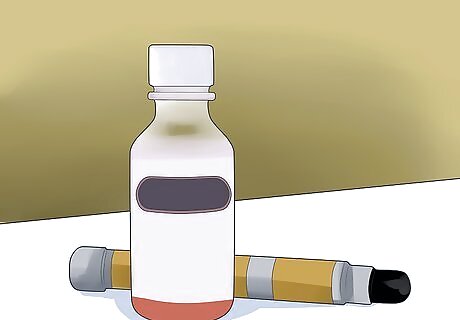
Don't rely on antihistamines. Antihistamines are widely used to reduce allergic itchiness in people, but unfortunately the results in cats are very disappointing. As the name of the drug suggests, antihistamines work by inhibiting histamine release from sensitized cells (histamine causes itchiness). Quite why this group of drugs are less effective in the cat is not certain. If you want to try antihistamines, they are unlikely to be detrimental to the cat and a safe dosage of chlorpheniramine (Piriton) is 2-4 mg by mouth twice daily per cat. The tablets are commonly 4mg so this is equivalent to half or one tablet, twice daily. There are no contra-indications to using anti-histamines at the same time as steroids or antibiotics.
Killing the Fleas

Understand the importance of killing off the fleas. Killing off the fleas is a crucial part of successfully treating flea bites. There are a number of excellent products available that are highly effective at killing fleas. In order to be effective it is necessary to treat all the animals in the house. This is because untreated animals act as a reservoir of infection and make it completely impossible to eliminate the flea population.
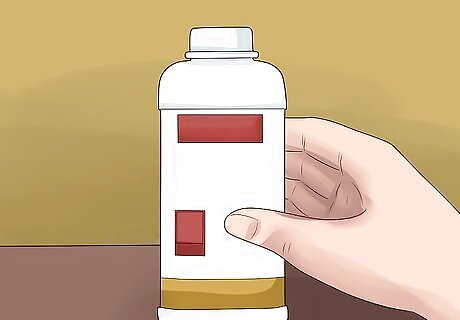
Find an anti-flea product called Fipronil. Fipronil is available as a spray and a spot-on product. It works by blocking the passage of calcium through the nerve cells of the fleas' nervous system, causing paralysis and death. The fipronil is taken up by the oil glands in the cat's skin and slowly released over time to provide protection for 4 weeks. Repeat application is necessary every 4 weeks to continue protection.
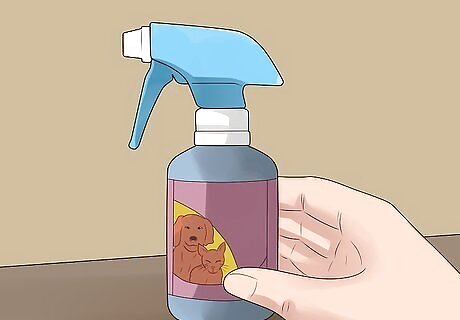
Use the spray version of fipronil. The spray form come in a pump bottle (available in 100ml, 250ml, and 500ml bottles). The concentration of fipronil varies depending on the bottle size and hence the dose varies. A 100ml bottle is appropriate for use in cats (the larger sizes are designed for dogs) and the dose is 6-12 pumps per kg of body weight. Thus a 3 kg cat requires 18-36 pumps spread evenly over the entire body. The minimum interval between treatments is 4 weeks.

Try the spot-on form of fipronil. The spot-on form comes in 50mg pipettes designed for use in the cat. The dose is one 50mg pipette applied to the skin on the back of the neck (where the cat won't lick it off), used monthly. This treats current infections and prevents re-infection.
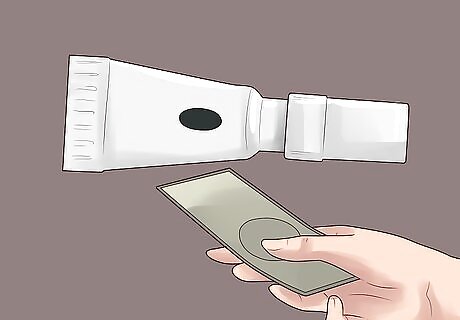
Buy a product containing selamectin. Selamectin belongs to a family of insecticides called the avermectins. It is available in the US as a spot-on, Revolution, and in the UK as Stronghold. Selamectin works by blocking nerve transmission in the flea, paralyzing it and causing death. The selamectin is applied once a month to the skin on the back of the neck. It has a persistent activity that lasts for 4 weeks, meaning the pet if fully protected from fleas for that month. Regular flea control and treatment of all in-contact animals should prevent reinfection and thus remove the need to treat flea bites. Selamectin is only available as a spot-on product. An average sized cat requires one 45mg pipette (blue top) applied to the skin on the back of the neck once a month. This should be continued on a permanent basis so as to prevent reinfection with fleas.
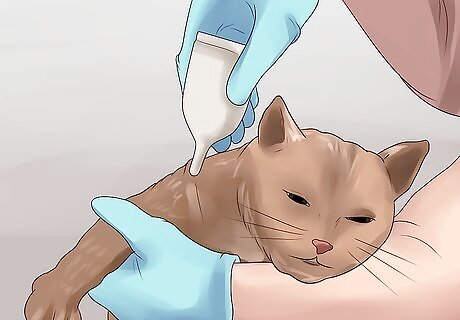
Prevent future flea bites. The key to preventing future flare ups is controlling the flea population. Thus, all cats should be treated monthly with an effective flea control product (such as those containing fipronil or selamectin). Other animals in the household may harbor fleas and they should also be treated, in addition to the allergic animal. Use an environmental control insecticide to kill flea eggs and larvae in the carpet and other soft furnishings. This prevents the next generation of fleas from hatching and re-infesting your cat.

















Comments
0 comment